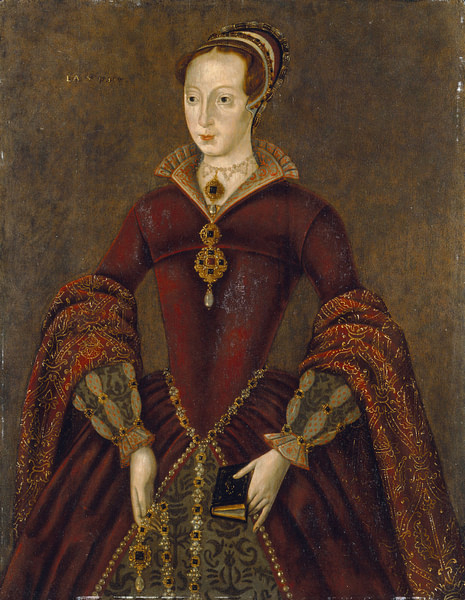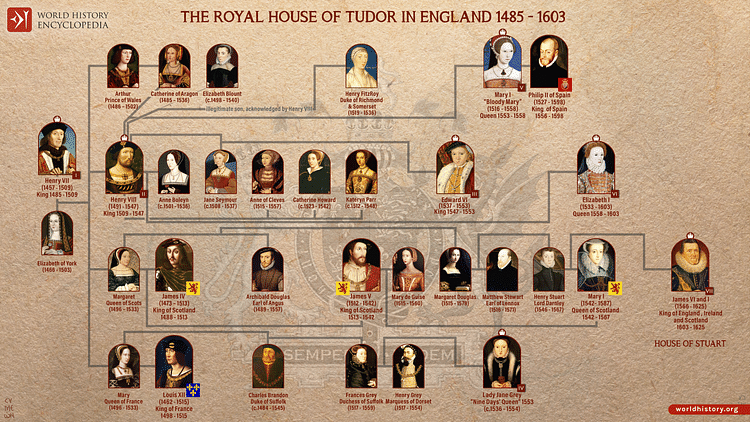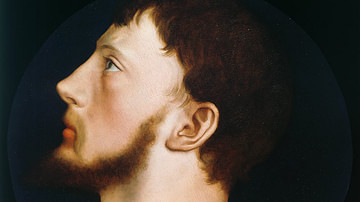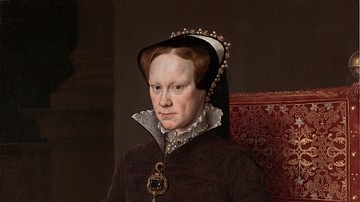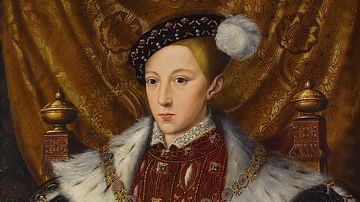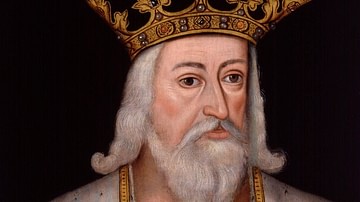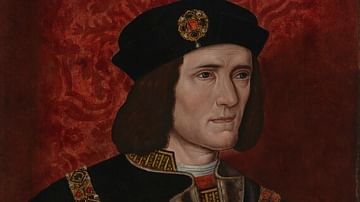
Lady Jane Grey (1537-1554 CE) was briefly declared Queen of England for nine days in July 1553 CE following the death of her cousin Edward VI of England (r. 1547-1553 CE). Then only 16 and never officially crowned, Lady Jane was first an unknowing and then an unwilling pawn in a political coup orchestrated by John Dudley, the Earl of Northumberland (l. 1504-1553 CE) who was, in effect, Edward VI's regent. Neither Dudley or Edward had wished to see the king's half-sister Mary become queen as she was a staunch Catholic and would undo the progress of the English Reformation and likely execute Dudley. As it turned out, both the nobility and commoners preferred a daughter of Henry VIII of England (r. 1509-1547 CE) as their queen; concern for legitimacy triumphed over religious matters. Mary I of England (r. 1553-1558 CE) imprisoned Lady Jane Grey in the Tower of London where she was executed in February 1554 CE.
Family Relations
Lady Jane Grey was born in October 1537 CE, the daughter of Henry Grey, the Duke of Suffolk (1517-1554 CE). She had a distant royal connection as Jane was the great-granddaughter of Henry VII of England (r. 1485-1509 CE) via her mother Frances, herself daughter of Mary Tudor, Queen of France (1496-1533 CE), the sister of Henry VIII. Perhaps most significantly, of all, Lady Jane became the daughter-in-law of John Dudley, the most powerful man in the kingdom, when she married his son Lord Guildford Dudley on 21 May 1553 CE. To further extend his tentacles of power, Dudley had Jane's two younger sisters, Catherine and Mary, marry two of his supporters.
Jane was beautiful, sensitive and, tutored by the famed scholar and educational theorist Roger Ascham (l. 1515-1568 CE), she was very well-educated. Jane came under the guardianship of Thomas Seymour (d. 1549 CE), husband of Catherine Parr (c. 1512-1548 CE), ex-wife of Henry VIII. Thomas was the brother of Edward Seymour (c. 1500-1552 CE), Lord Protector and regent to Edward VI. Significantly, Jane was brought up a devout Protestant and so it was a combination of her family connections and religious convictions that ultimately sealed her strange fate to become, albeit fleetingly, the Queen of England.
The historian Nigel Jones gives the following physical description of Jane:
She was a tiny creature who disguised her small stature by wearing 'stilts' (built-up cork heels) beneath her dress…A pretty girl with auburn hair, hazel eyes, dark eyebrows, freckles, red lips and sparkling teeth, Janes was no one's fool..She too was a true Tudor. (229)
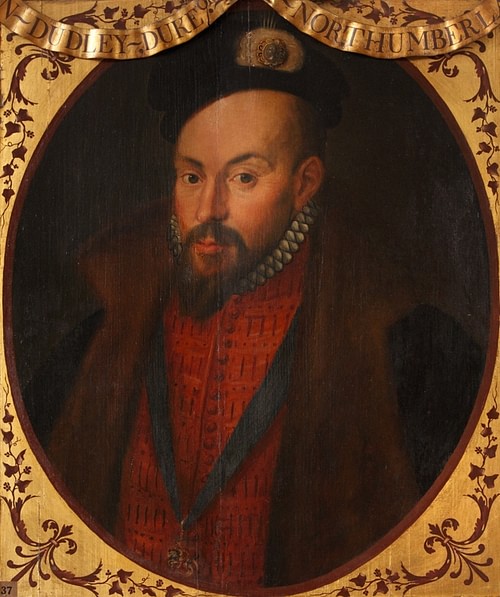
Dudley, Earl of Northumberland
John Dudley, the Earl of Warwick, had taken over from Edward's maternal uncle Edward Seymour, the Lord Protector, in October 1549 CE. Dudley had benefitted from Seymour's lack of decisive action against several rebellions, most notably the Kett Rebellion in Norfolk in 1549 CE. Dudley, in contrast, had led the army which had massacred the rebels in Norfolk at Dussindale on 26 August and was thus able to promote himself as Seymour's successor. Dudley became the most powerful man in England and regent to Edward VI in all but name. In 1551 CE Dudley made himself the Earl of Northumberland and he removed any rivals from public office, even the discredited Edward Seymour was executed on 22 January 1552 CE.
Dudley pressed on with the Reformation, which had begun with Edward's father Henry VIII, with gusto, perhaps more motivated by greed for the Church's wealth than any true religious conviction. The radical Book of Common Prayer was introduced in 1552 CE and there were further restrictions made on 'Popish' practices like the toning down of the vestments of the clergy and abolition of mass for the souls of the dead. The king and Dudley worked closely together with the earl secretly teaching Edward speeches he could deliver with finesse before the King's Council the following day. But then disaster struck. Edward contracted both measles and smallpox in the summer of 1552 CE. In 1553 CE, after a particularly harsh winter, he was showing the effects of tuberculosis and his days were numbered.
Henry VIII had stipulated that should his son die without children of his own then Edward's elder half-sister Mary (b. Feb. 1516 CE) would become queen. Mary was a staunch Catholic, though, and her succession would mean the reversal of the Reformation and, even more seriously for Dudley, she would likely take retribution on its key supporters.
The Nine-Day Queen
To save himself first and the Reformation second, then, Dudley persuaded Edward, who was himself a keen Reformist, to nominate instead of Mary his cousin Lady Jane Grey. This document, often called the 'devise of succession', also specifically disinherited both Mary and her younger half-sister Elizabeth (b. Sep. 1533 CE), additionally declaring both of them bastards. The 'devise' contradicted the law and was not approved by Parliament, although some Protestant bishops were more than happy to go along with it. Northumberland had the support of such nobles as the earls of Oxford, Warwick, and Huntingdon, the Marquis of Northampton, and lords Clinton and Grey, others were cajoled into acquiescence, seemingly, as events would unfold, against their better judgement. Finally, Lady Jane was perhaps as surprised as anyone to be informed she would be queen - although she did not find out until the king had died - and she protested from the off that she was not perhaps the right choice.
Edward died of pulmonary tuberculosis on 6 July 1553 CE at Greenwich Palace, aged just 15. Dudley kept the death secret for a few days while he moved to install Lady Jane Grey as queen, then just 16 years of age. The king's council and Parliament accepted Edward's nomination of Jane who was declared queen on 10 July. Dudley tried to persuade Jane to name her husband as king but she refused, condescending to award him the title of Duke only.
Unfortunately for all Dudley's carefully laid plans, Mary Tudor was not about to let this opportunity slip away, and she had plenty of support she could call upon immediately. Dudley (or Edward) made the fatal mistake of not imprisoning Mary and so she fled to the security of her estates in Norfolk. Nobles and their armies quickly gathered to support Mary in her stronghold at Framlingham Castle, and on 19 July Mary declared herself queen. Eventually, a 30,000-strong force marched in Mary's name on London, and both the nobility and commoners there and elsewhere were united that Henry VIII's original wish should be honoured. The choice between a lady with only distant royal relations and a daughter of Henry VIII was an easy one to make for the public regardless of religious convictions. In addition, to accept Edward's 'devise' was to put the monarch higher than Parliament and the law, a dangerous move which could incur serious problems in the future. Dudley was duly deserted by the council and arrested at Cambridge on his way to try and capture Mary on 21 July. Dudley's army of 2,000 men vanished away like smoke in the wind; a last-minute declaration in support of Mary was not quite enough to save his neck.
Mary was met by cheering crowds in London on 3 August 1553 CE. Lady Jane Grey, who had been a reluctant participant in the whole scheme and who told Mary that she was perfectly happy to return to her normal life, was confined in the Tower of London along with her husband. Mary was crowned in Westminster Abbey and so became Mary I of England on 1 October 1553 CE.
Imprisonment & Execution
Lady Jane Grey became one of the many famous detainees of the Tower of London, in her case, her royal palace had swiftly become her prison. Jane, kept in the Lieutenant's Lodgings, rued the easily-swayed Reformists who had swung back in favour of Mary and royal legitimacy. Even her own chaplain had turned coat, as Jane noted in her diary, prior to her confinement he was a "lively member of Christ" and after her downfall, he became "the deformed imp of the Devil" (Brigden, 206). She also wrote a long letter to her queen explaining the recent events and that she accepted blame for presuming to take her crown but that she had meant no harm to Mary. As she summarised, "No one can say that either I sought it as my own, or that I was pleased with it" (Jones, 235). Even the captive Dudley exonerated Jane as an active participant in the whole debacle. Queen Mary did contemplate releasing her cousin, as she had already done with many other prisoners in the Tower, but she was warned that Jane could become a focus for rebellion.
Dudley was executed on 22 August 1553 CE. Mary, not understanding that her popularity lay in her family name and legitimacy rather than her religious convictions, was determined to return England to Catholicism. In October 1553 CE, when the queen announced her betrothal to Philip (b. 1527 CE), son of King Charles V of Spain (r. 1516-1556 CE), England's Catholic enemy number one, rebellion was in the air. There were rumours of a planned Spanish invasion of England. The volatile situation sealed Lady Jane's fate as Mary could not afford for her to become the figurehead of a plot to dethrone her. Lady Jane was tried at London's Guildhall on 13 November 1553 CE. The sentence was automatic for women convicted of treason: to be burnt at the stake. The queen signed Jane's death warrant, a document which still survives today, but commuted the method to beheading. Mary had acted wisely, for a rebel army led by Sir Thomas Wyatt marched on London in January 1554 CE and Jane's father, the Duke of Suffolk tried but failed to raise a contemporary rebellion in Leicestershire.
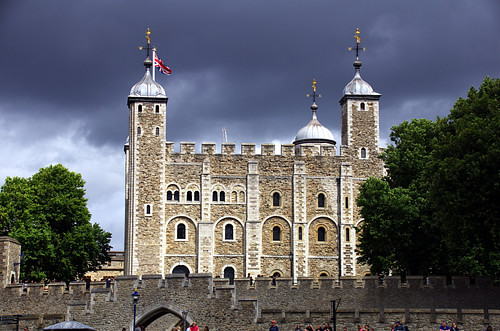
After Queen Mary sent her chaplain to enquire if Jane would be willing to renounce her Protestantism and received a definite 'no', the dreadful sentence finally came to pass. Jane refused the offer to see her husband one last time, stating they would "meet shortly elsewhere" (Jones, 242). On 12 February 1554 CE Guildford Dudley and then shortly after Lady Jane Grey were both executed by beheading. The execution was carried out within the walls of the Tower of London rather than on the usual Tower Hill as Jane was of royal blood and so there could be no outpouring of public sympathy for her. Calmly tying the customary blindfold herself and then, after struggling a little to find the block on which to lay her head, she said her last words: "Lord, into thy hands I commend my spirit" (Jones, 244). Queen Mary, meanwhile, went on to reign until 1558 CE and did indeed reinstall the Catholic Church in England but her plans were themselves reversed, this time permanently, by her own successor, her half-sister Elizabeth I of England (r. 1558-1603 CE).
